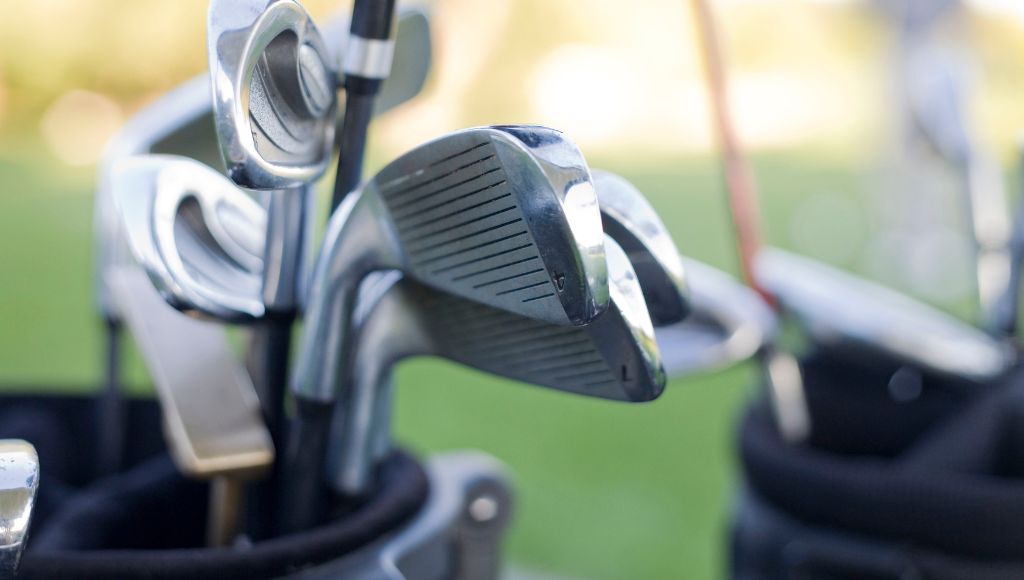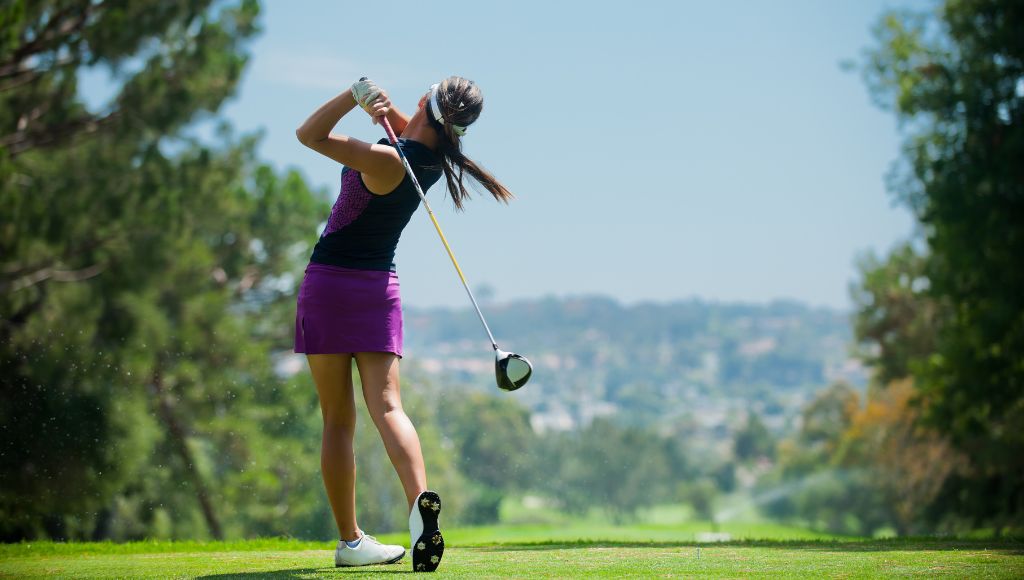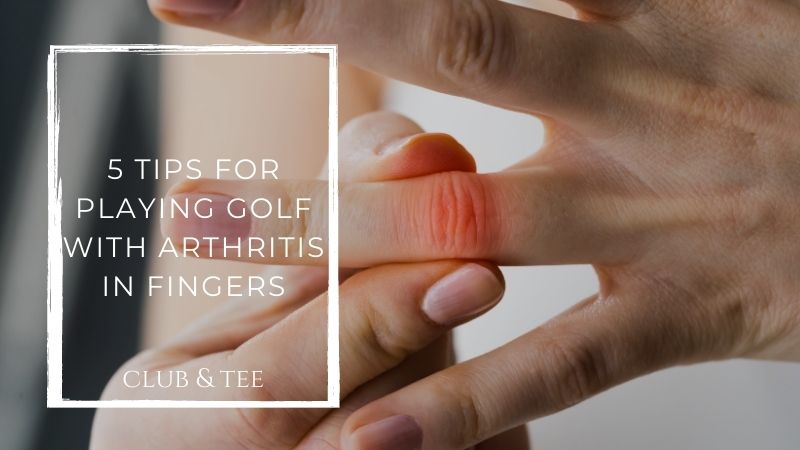Golf is a popular sport enjoyed by millions of people all over the world, but for golfers with arthritis in their fingers, it can be a source of pain and discomfort. However, just because you have arthritis in your fingers doesn’t mean you have to give up on your love for golf.
With a few simple modifications and techniques, you can continue to play the game you love and reduce the pain associated with this degenerative joint disease.
In this article, we’ll be sharing 5 tips for playing golf with arthritis in your fingers, to help you enjoy a comfortable and enjoyable round on the green. So, if you want to find ways to get back out on the course with your golf bag then keep reading as these tips will help keep your fingers pain-free and ready for your next shot.
Can you play golf with arthritis in your fingers?
You can play golf with arthritis in your fingers. However, a condition such as inflammatory arthritis disease can make your time on the golf course uncomfortable. Golfing causes hand pain, achy hands, along with stiffness in the joints, which makes it difficult to grip a golf club and hit the ball.
However, a few modifications to your game can make a big difference when golfing with arthritis. Changes such as using larger golf grips, adjusting your swing, using a wheeled cart, reducing grip tension, and using gloves, can reduce the pain and discomfort associated with arthritic joints.
Additionally, warm-up exercises and maintaining good hand and wrist health can also help protect your fingers during the game. With the right approach and techniques, those with arthritis in their fingers can continue to enjoy playing golf and improve their performance.

Tips for playing golf with arthritic fingers
Use specialized gloves
If you have arthritis pain in your fingers using specialized gloves for golf can help you play the game more comfortably and ease hand pain. The design of these gloves are with a specific fit for those with arthritis, offering added padding, extra grip on the club, and support to the joints and fingers.
Wearing gloves reduces the pressure and stress put on the affected areas, allowing for a more relaxed grip on the club, and reducing the wear and tear on your joints. The gloves also come with adjustable closure options to ensure a perfect fit, helping to minimize any discomfort or pain while playing.
Additionally, some unique gloves are equipped with silicone inserts to help absorb shock and reduce vibrations in the hands and arms during a swing. In case of you inadvertently striking the ground before the ball. helping to reduce the impact of the game on the joints. By using a specialized glove, golfers with finger arthritis can continue to enjoy their golf game without having to worry about hand pain.
Use lighter clubs
Using lighter golf clubs in your golf bag can help alleviate the symptoms of finger arthritis by reducing the amount of stress placed on the joints. Lighter clubs, with graphite shafts, are recommended over those with steel shafts. They require less grip strength, allowing the golfer to grip the club with a looser grip during the golf swing, reducing the pressure on the fingers.
This can reduce the pain and discomfort associated with arthritis, allowing the golfer to play for longer periods without experiencing achy. Additionally, lighter clubs also reduce the strain on the wrist, arms, and shoulders which can help further reduce joint pressure.
Another benefit of using lighter cubs is that they are easier to swing and provide less resistance meaning you can follow through with less force. Leading to better control of your ball and a more enjoyable round of golf.

Take breaks from joint pain
Taking breaks from golf can help alleviate the pain and discomfort associated with finger arthritis, this allows your joints time to rest and recover. Reducing the amount of strain and pressure put on your fingers during your golf game can help prevent further damage and slow down the progression of the condition. You will need to listen to your body and act accordingly.
It might be that you simply miss out on a few holes during a round with your friends. During breaks, you can also perform exercises or stretches to help improve flexibility and range of motion in your fingers. The Arthritis Society suggests some helpful hand exercises.
Alternatively, you can choose to take a longer break away from the game. It will be no fun if you constantly play in pain. Taking time away from the sport allows your body to heal and reduce inflammation, which can make it easier to play golf when you return. Regular breaks from golf can also allow you to perform better when you return to the sport.
Use larger grips
Using larger grips can help alleviate the symptoms of arthritic fingers when playing golf. Arthritis disease causes swelling, and stiffness in the joints, making it difficult to grip a golf club. A larger grip will reduce the pressure on the fingers, allowing for a more comfortable grip.
Additionally, larger grips can also provide more leverage, which can help reduce stress on the fingers. Furthermore, using oversized grips also reduces the need for excessive hand strength, which can put extra pressure on the other joints in the body such as shoulders and arms. Consider changing your grips to continue having fun playing golf.

Adjust your golf swing
To continue playing golf with arthritis pain in your fingers, adjusting your swing is an important step to take. During the swing and follow through it’s essential to keep grip tension low. High grip tension can put added stress on the fingers, causing pain and discomfort.
To reduce grip tension, try loosening your grip on the club. This will help to reduce the pressure on the fingers and joints. Additionally, try to focus on using your larger muscle groups, such as your arms and shoulders.
The classic swing is to finish with a follow through in the one o’clock position to generate power. To reduce joint pain and stress on the lumbar spine it is recommended to practice finishing the swing early in the three o’clock position, known as the reverse c swing. This shortened range of motion will reduce the need for excessive hand strength and minimize the strain on the fingers.
We would recommend visiting a golf coach for expert advice, but by maintaining a relaxed grip and using your larger muscle groups, you can play golf with less discomfort and pain, even with finger arthritis.

FAQs
How do I stop my fingers from deforming with arthritis?
Arthritis can cause the fingers to deform, leading to discomfort and difficulty with daily activities, including playing golf. To prevent finger deformation, it is essential to maintain a healthy lifestyle, including a balanced diet and regular exercise.
Keeping the hands and fingers moving and stretched through exercises prescribed by a physical therapist can also help. Using splints or wearing wrist braces to support the fingers and joints can also help prevent deformities.
What relieves arthritis pain in fingers?
Pain in the fingers from inflammatory arthritis can be relieved through a combination of different methods. One of the most effective ways is to maintain a low grip tension when participating in activities that cause strain on the fingers, such as playing golf. Ice therapy, such as using a cold pack, can also help to reduce swelling and provide temporary relief.
Over-the-counter pain medication can also help to relieve pain. In more severe cases, a doctor may prescribe stronger medications or recommend physical therapy or injections. It is essential to talk to your doctor about what treatments will work best for you and give you the most relief from arthritis pain in the fingers.
How do you protect your fingers for golf?
Protecting your fingers while playing golf is important, especially if you suffer from arthritic fingers. One way to protect your fingers is by wearing gloves designed specifically for golf that offers support for the fingers.
During the game, avoid gripping the club too tightly, as this can put extra stress on the fingers. Additionally, if you start to feel any pain or discomfort in your fingers, take a break and stretch them out.
Please remember, these are just general tips, if you are in pain, always refer to a professional sports medicine physician, or doctor trained in physical medicine to ensure you get the best advice or rehabilitation. This way all of the remedies and health benefits of playing golf can be discussed with a trained expert.
Final thoughts – playing golf with arthritis in fingers
We hope you have enjoyed reading our 5 tips for playing golf with finger arthritis. In conclusion, playing golf with finger arthritis is possible with the right approach and modifications. Changes which include using oversized grips, adjusting your swing, and reducing grip tension, can reduce the pain and discomfort.
Additionally, using gloves, warm-up exercises, and maintaining good hand and wrist health can help protect your fingers keeping golfers playing longer. Using these tips and techniques you can continue to enjoy the game you love and have a comfortable, enjoyable experience.

